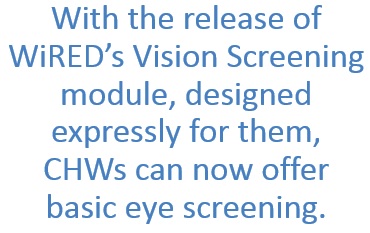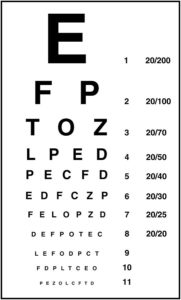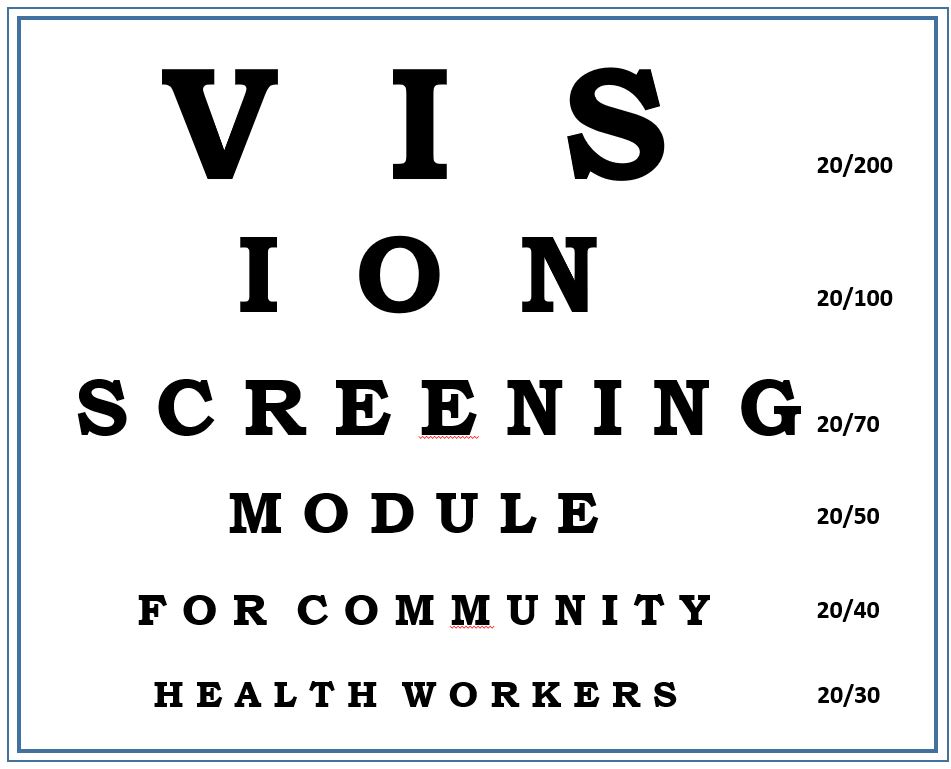WiRED Releases Vision Screening Module
An Important Addition to Community Health Worker Training
By Allison Kozicharow; Edited by Elizabeth Fine
Community health workers (CHWs) are essential to help offset the scarcity of medical professionals in low-resource regions of the world. WiRED International’s training program provides detailed instruction on all key topics and skills CHWs use in the field — infectious and noncommunicable disease, patient communication, health surveillance — and provides CHWs with a variety of basic clinical skills.
 With the release of WiRED’s Vision Screening module, designed expressly for them, CHWs can now offer basic eye screening. At the completion of the module, CHWs will be able to:
With the release of WiRED’s Vision Screening module, designed expressly for them, CHWs can now offer basic eye screening. At the completion of the module, CHWs will be able to:
- Describe the visual system, including naming parts of the eye and describing how the eye functions
- Perform a simple vision test with children and adults
- Carry out an Amsler Grid Test
- Explain the elements of a comprehensive eye examination by an eye doctor.
 WiRED’s versatile CHW program prepares CHWs not only to be knowledgeable about health issues but to be ready to face expanding duties and urgent community needs at a moment’s notice. WiRED requires all CHWs we train to enroll in our Continuing Medical Education Program — whether CHWs join to focus on local health conditions, to build additional skills or to understand correctly the details of emerging illnesses and treatments.
WiRED’s versatile CHW program prepares CHWs not only to be knowledgeable about health issues but to be ready to face expanding duties and urgent community needs at a moment’s notice. WiRED requires all CHWs we train to enroll in our Continuing Medical Education Program — whether CHWs join to focus on local health conditions, to build additional skills or to understand correctly the details of emerging illnesses and treatments.
With the addition of the Vision Screening module to their repertoire, WiRED CHWs go forward with one more tool to help advance their community’s health.
Eye Health is Tied to Global Health
In 2015 the United Nations adopted 17 Sustainable Development Goals (SDGs) to be achieved by 2030 in order to end poverty and protect the planet. The Lancet published a review that examines evidence on how improving eye health can contribute to advancing SDGs. The reviewers identified 29 studies that showed that eye health services directly benefit the SDGs of ending poverty, increasing education and equality and achieving sustainable cities. The eye health services included cataract surgery, free cataract screening, provision of spectacles, trichiasis surgery, rehabilitation services, and rural community eye health volunteers. These findings provide a comprehensive perspective on the direct links between eye health services and advancing the SDGs.


